Living in Madrid, I have visited El Capricho Park numerous times. Although it is not as famous as El Retiro, it is just as beautiful. More importantly, its history is just baffling!
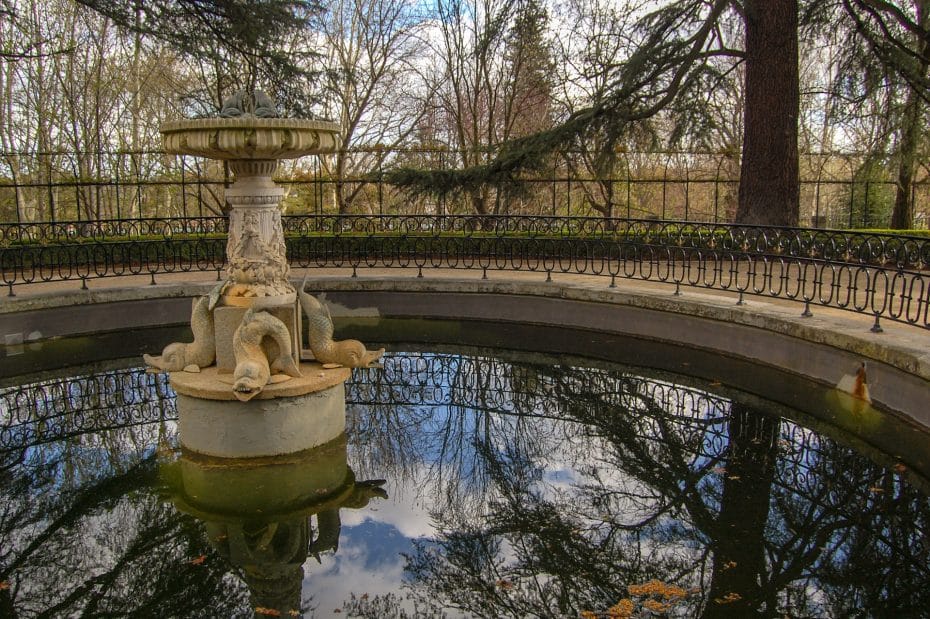
The park spans an area of about 14 hectares and is located in the Alameda de Osuna neighborhood. While it was built in the 18th century, it was only opened to the public in 1974. This park includes a range of gardens that display different European design styles. As you walk through, you’ll come across French, English, and Italian gardens.
Parque El Capricho: A Historical Overview
The Park’s history begins in 1784 when the Duchess of Osuna, María Josefa Pimentel, acquired the land.
Rumor has it that Doña María Josefa was quite an oddball, willing to do anything to keep the members of the Spanish royalty amused. She went as far as to acquire this land on the outskirts of Madrid with the sole purpose of building some sort of late 18th-century Disneyland where the aristocratic members of the Court could play. The property was supposed to be developed as a private park reflecting her aesthetic taste and interests to the point that it was called “El Capricho, ” which translates as “The Whim.”
At the time, huge gardens the likes of Versailles were the thing to have. But unlike Versailles, which was designed a century earlier, the taste of the late 18th-century noble ladies was less about grandeur and more about theatrical parks where they could play and amuse themselves pretending to be peasants, hermits or gardeners.
Over the years, several architects and landscapers contributed to El Capricho’s design, each adding their flair while keeping with the romantic landscape style preferred by the Duchess. Artists like Pablo Boutelou in 1784 and Jean-Baptiste Mulot, a French gardener who worked for Queen Marie Antoinette, played significant roles early on.
The park’s construction continued until 1839, even after the Duchess died in 1834. It covers around 14 hectares and is structured into three distinctive parts – the French parterre, the English landscape garden, and the Italian giardino.
During the Spanish Civil War (1936-1939), El Capricho was used as a military base; this can be seen in bunkers and shelters built on its grounds that provided defense against air raids during the conflict.
After decades of private ownership, El Capricho Park was opened to the public by Madrid’s city council, who had bought it in 1974.
El Capricho Visit
Just before the main entrance, you will encounter a round square, which was once used to host bullfights.
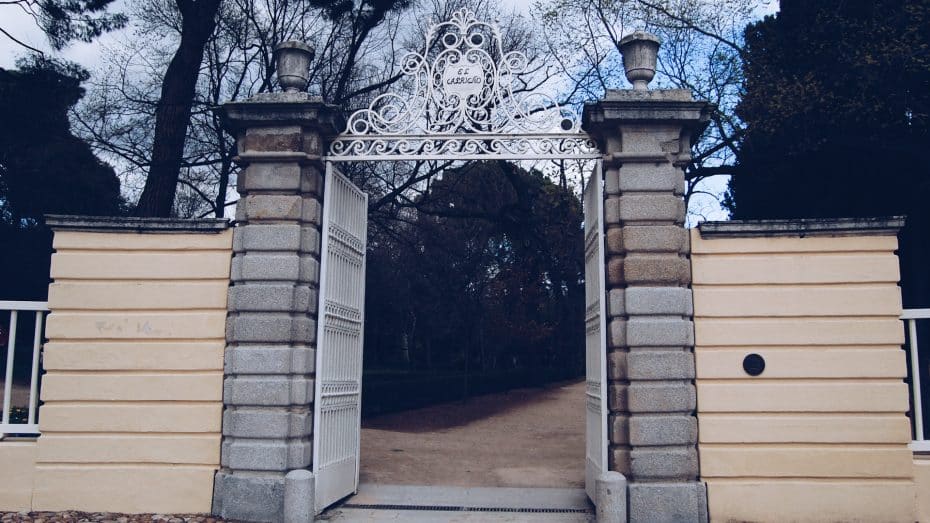
After the gate, you walk through the Paseo de los Duelistas (the Duelists Walk), named after the two statues that stand in front of each other, until you reach the Plaza de los Emperadores. It is decorated with the sculptures of twelve Roman Emperors and crowned by a beautiful exedra with sphinxes.
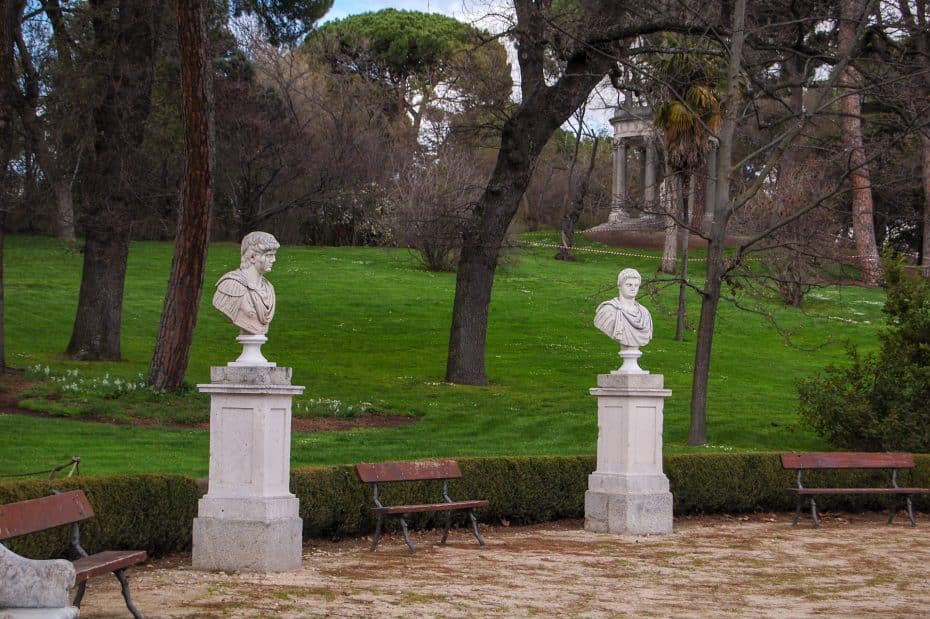
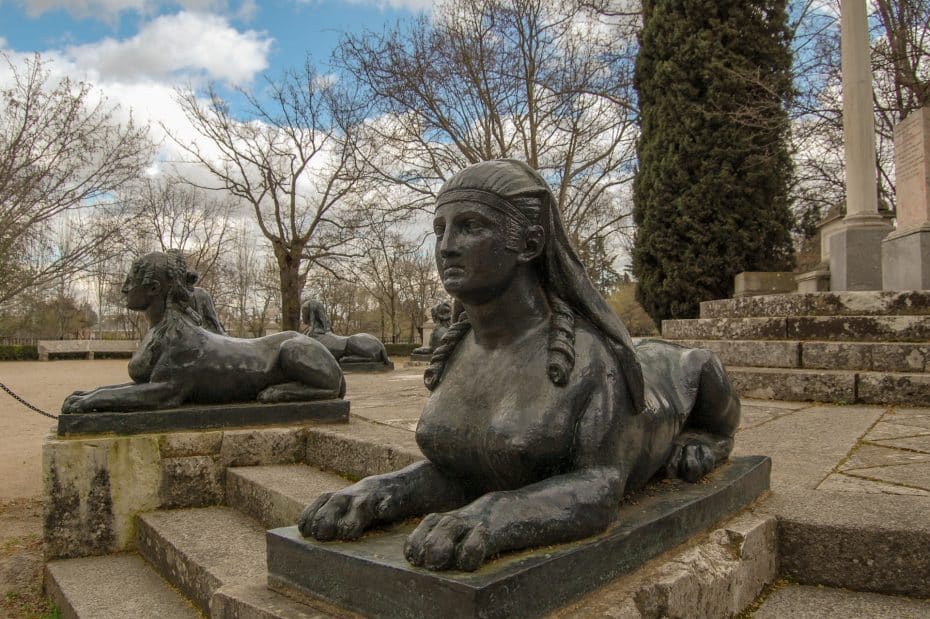
To the right, on the park’s lower level, there is a huge maze, a staple feature of Romantic gardens. Made from thick hedges, this labyrinth is fun and challenging to navigate.
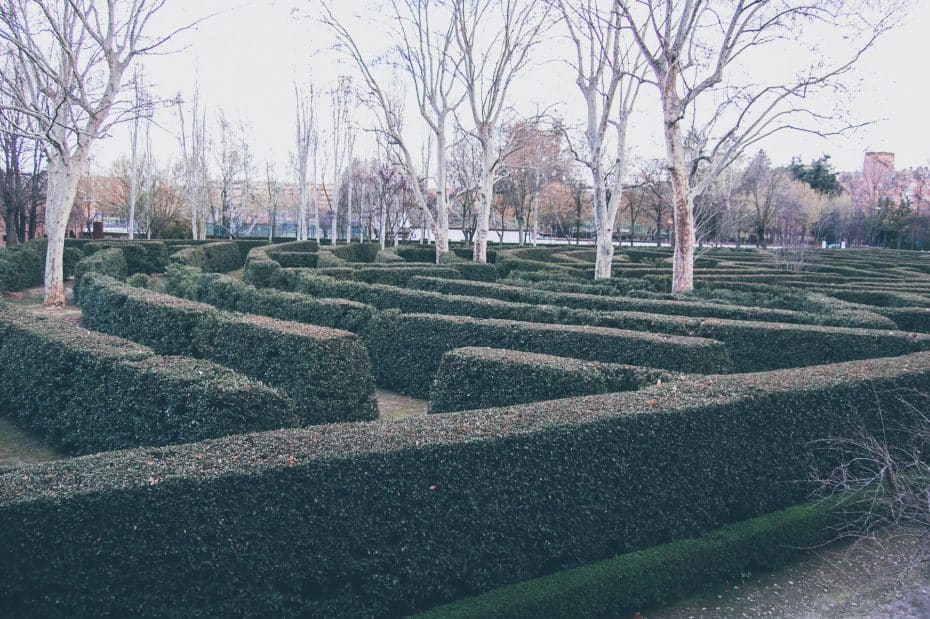
The big promenade continues until you reach the Palacio de los Duques, an elegant building that once belonged to the Dukes of Osuna, one of the most important noble families in Spain at the time. The Palace of the Dukes of Osuna, partially restored but closed to the public, is surrounded by perfectly manicured gardens and lovely fountains.
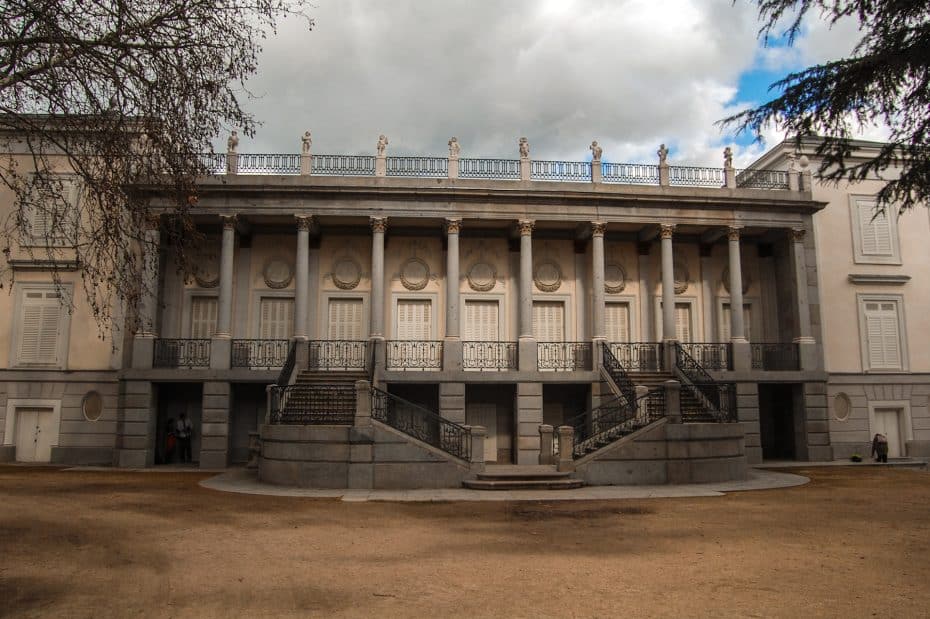
The faux dramatic scenes, typical of Romanticism, combine architectural features with the park’s lush greenery.
One of El Capricho’s uncommon features is that it has its own apiary (bee house). Here, members of the Royal Court could keep their own beehives for honey production.
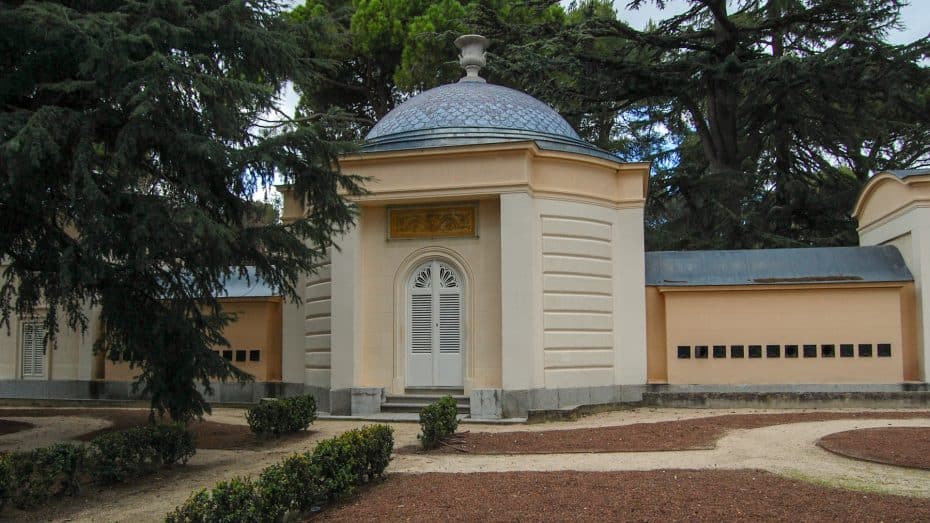
There’s also a mock fortress. “El Fortín” is surrounded by a pit with water and the remains of what used to be drawbridges. Originally, it even had real-size dolls dressed as Spanish soldiers on it.
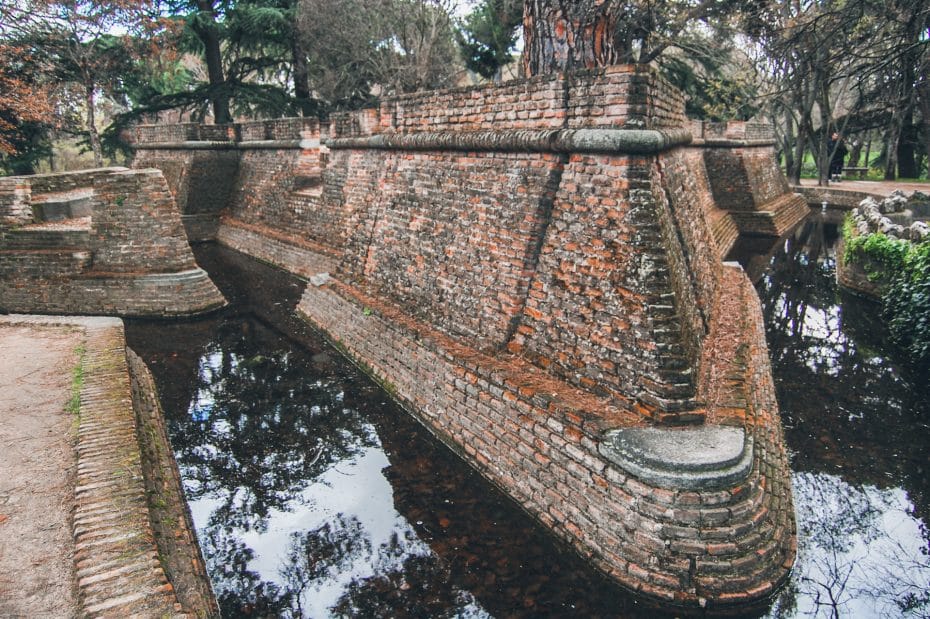
The park’s central lake has a fountain, an iron bridge, a small harbor, and a Venetian-style canal that leads to the Dining Room. From the Dining Room’s pier, the high-society ladies could board small boats that would, in a very dramatic manner, take them along a canal to the Big Ballroom (on the north side of the park). Talk about an over-the-top dinner party!
A large sculpture of a wild boar greeted them as they arrived. The Ballroom has an octogonal floor and it’s decorated with frescoes.
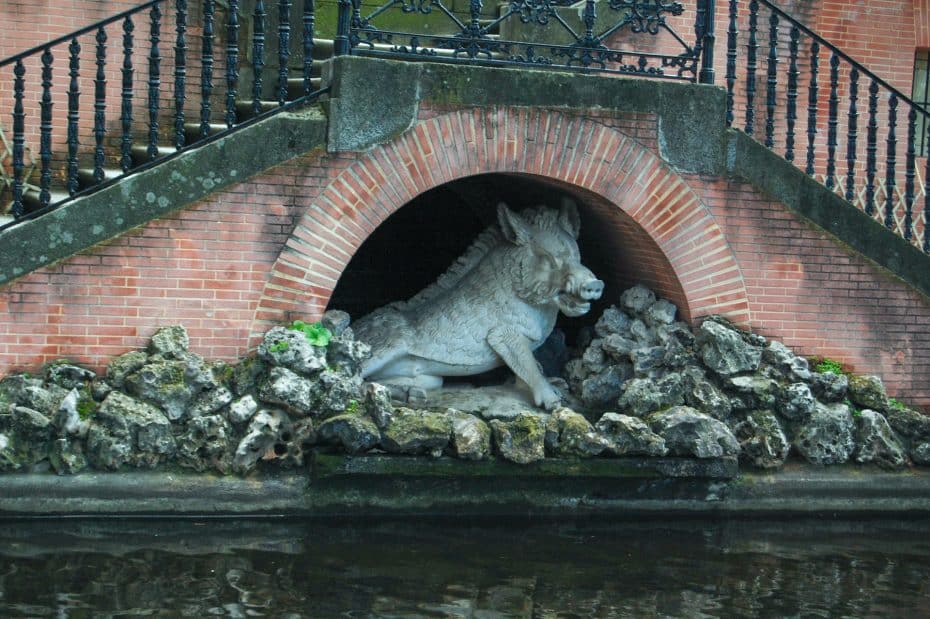
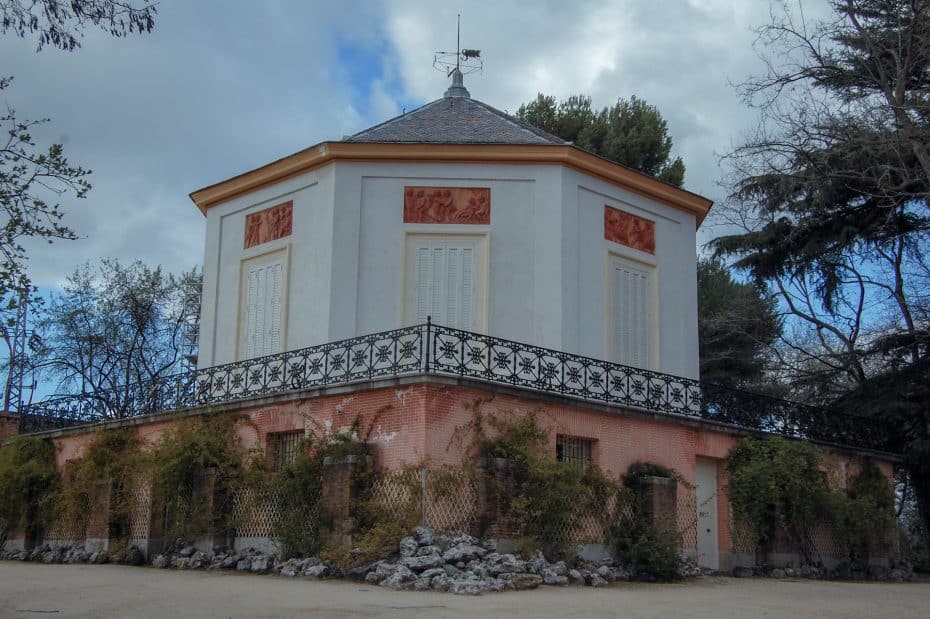
Walking towards the exit, we bump into other theatrical sets, such as a castle in ruins and a small church (complete with an actual consecrated altar).
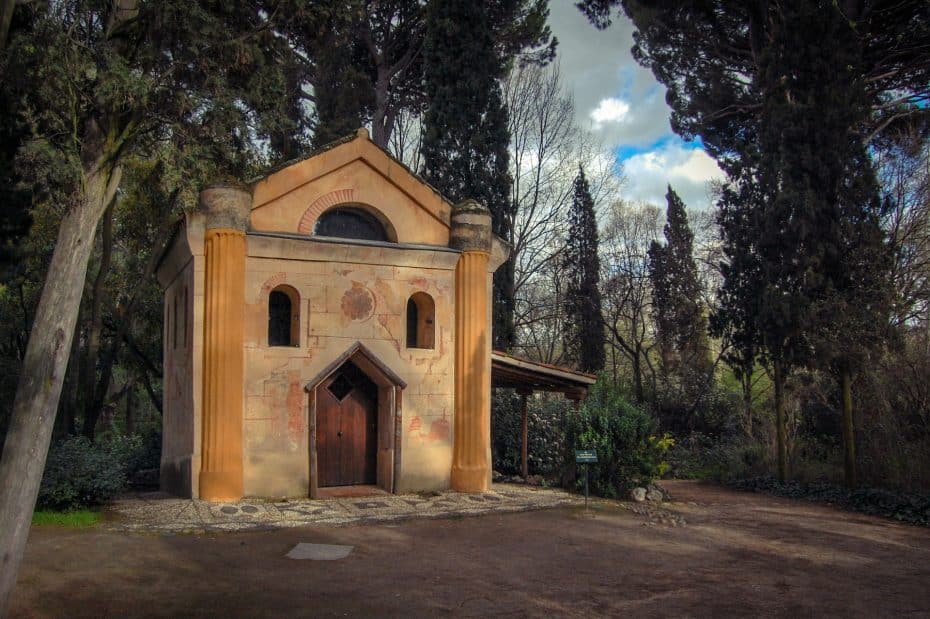
A little further lies the beautiful Bacus Temple, an oval marble structure with a statue of the Roman god. It is perhaps the most beautiful feature of the park.
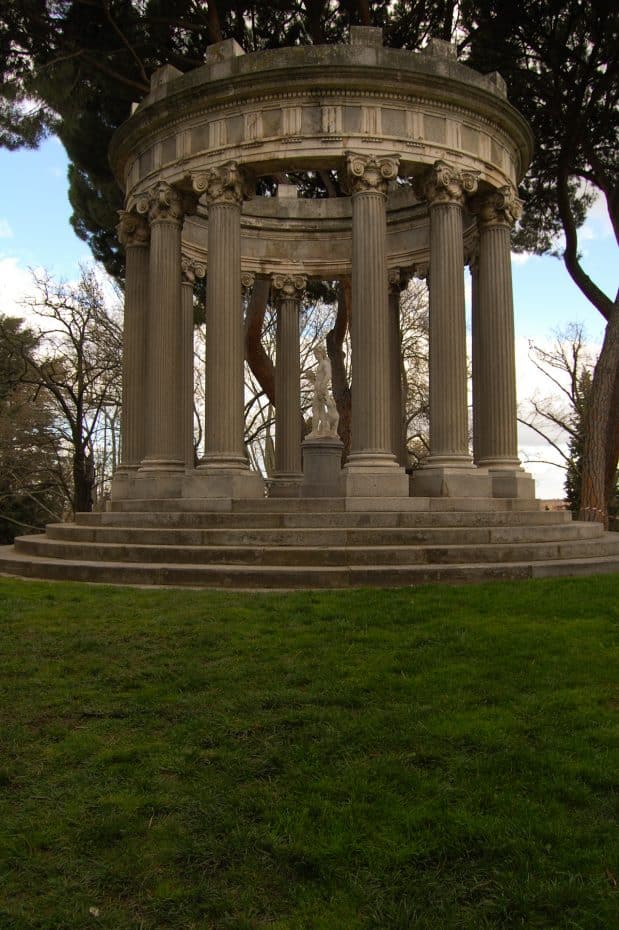
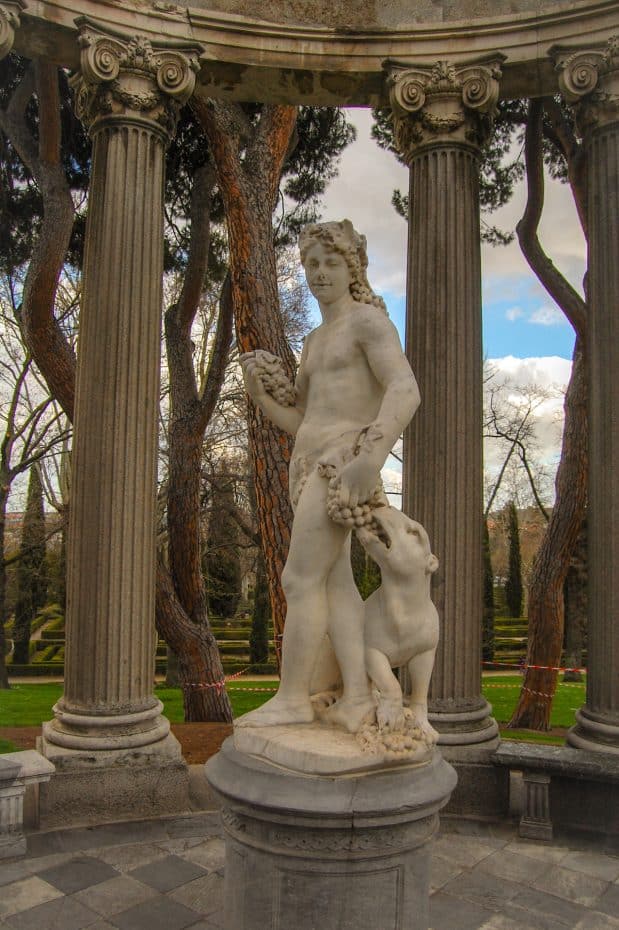
The last attraction in this bizarre old-timey theme park is the Peasant’s House, a typical countryside building with its own vegetable garden.
The peasant house offered the perfect opportunity for noble ladies to play poor, tend to gardens, and grow vegetables, at least for a few hours. As you can imagine, the massive estate of El Capricho was actually tended by a staff of dozens of servants.
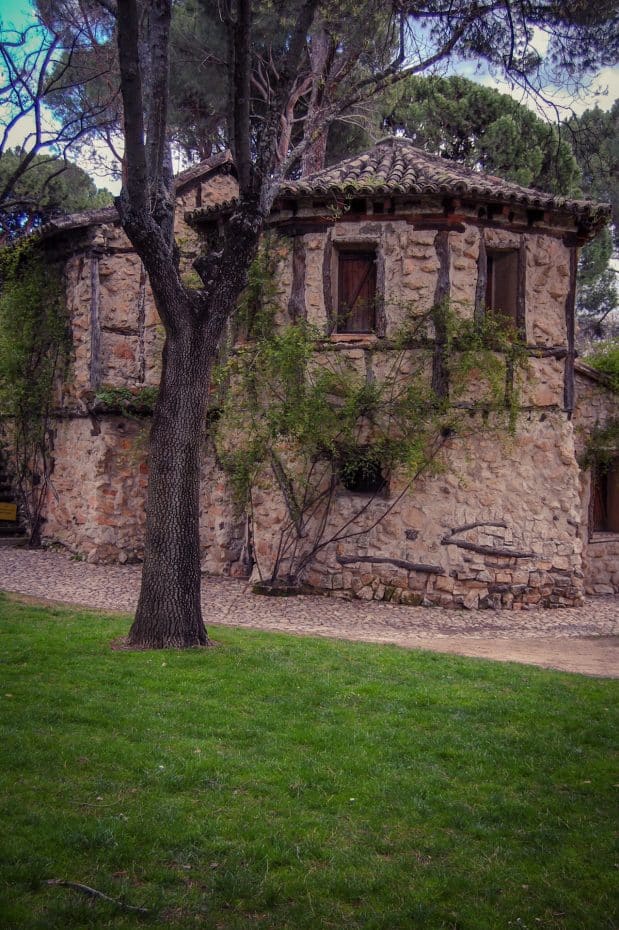
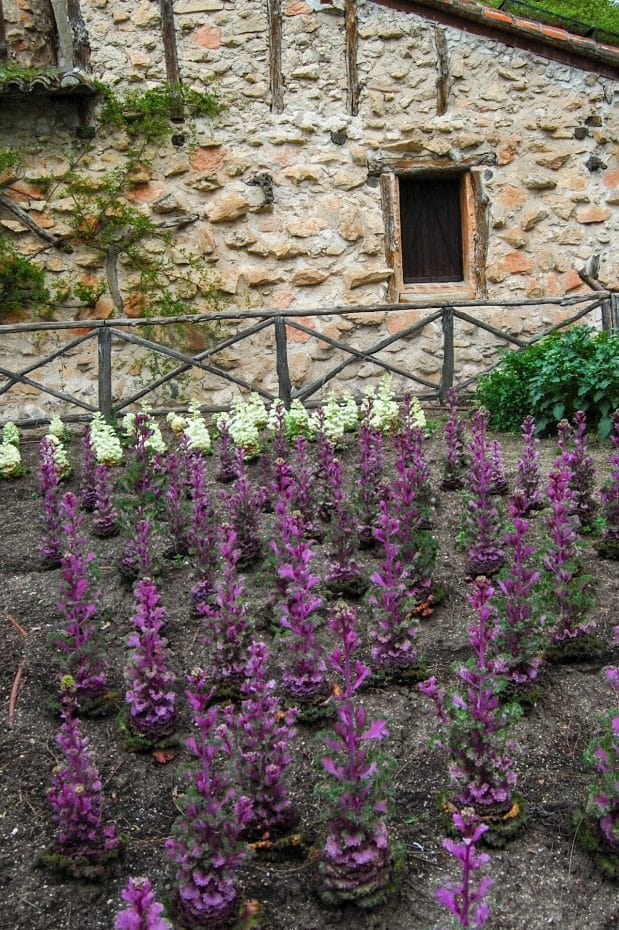
So, you leave the park thinking about the irony of being a noble person in late 18th-century Spain and wanting nothing more than to entertain yourself by doing poor people’s activities.
More Interesting Facts about El Capricho Park
The money that built El Capricho and supported its grandeur came from the many titles and lands owned by the Osunas. Their financial power was closely tied to agricultural revenues.
The Dukes did not permanently live at El Capricho Park; instead, they used it for social gatherings and events.
The park changed hands in 1896 when the Osuna family could no longer manage it due to financial troubles. The property was purchased by the Bauers, a Jewish banking family.
During the Spanish Civil War, the park became the headquarters for the Republican Army. There is still a network of bunkers and air-raid shelters underneath the gardens, the main gate and some of its air vents are still visible.
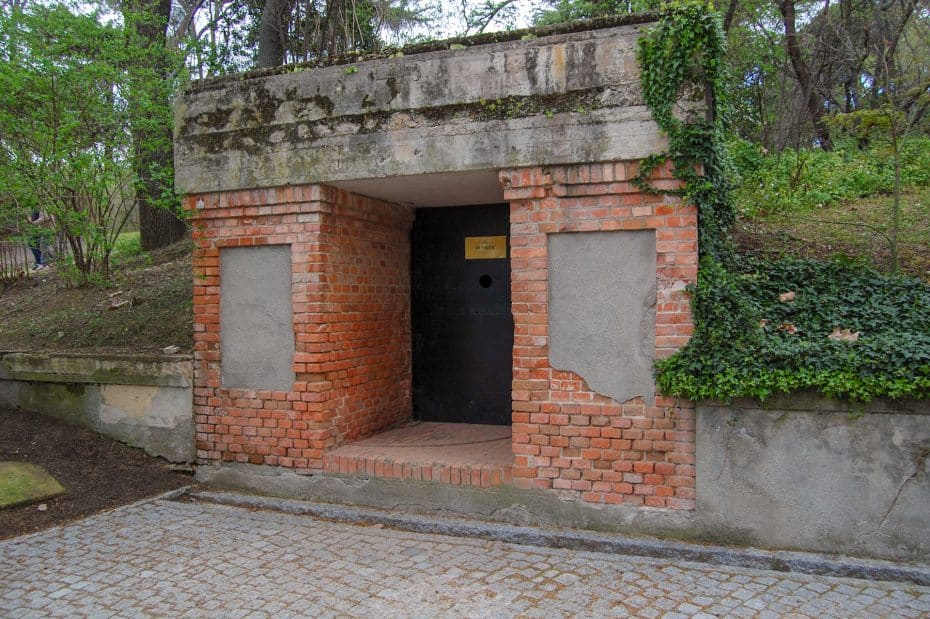
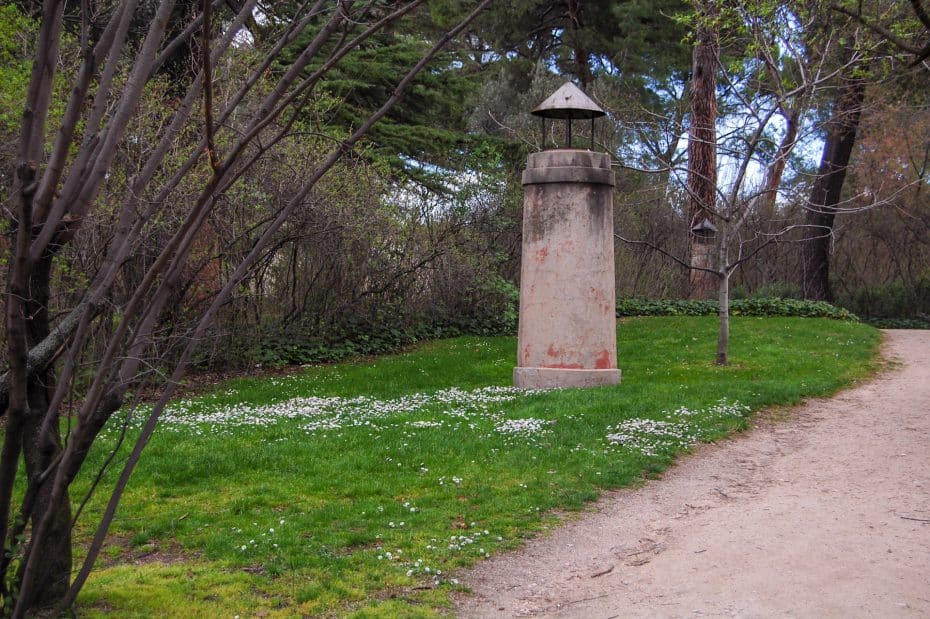
The Duchess of Osuna was one of the big promoters of Goya’s paintings, and some of his most famous works, such as “The Four Seasons,” The Swing,” or “Country Lunch,” were painted in the park.
Jardín Histórico El Capricho: Useful Information
- Address: Paseo de la Alameda de Osuna, s/n
- Phone Number: (+34) 91 588 01 14
- Closest metro station: El Capricho (L5)
- Buses: 101, 105, 151
- Opening times:
- Winter (October to March): Saturdays, Sundays, and holidays from 09:00 a.m. to 06:30 p.m.
- Summer (April to September): Saturdays, Sundays, and holidays from 09:00 a.m. to 09:00 p.m.
- Closed: Jan 1st and Dec 25th.
- Price: Free of charge.


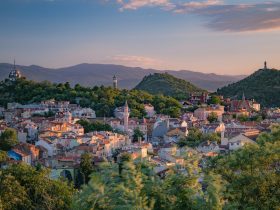

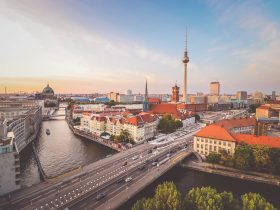
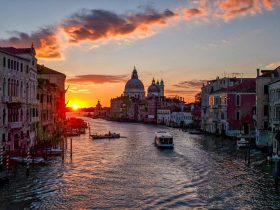
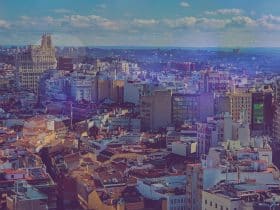
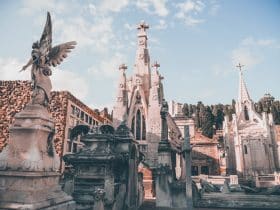
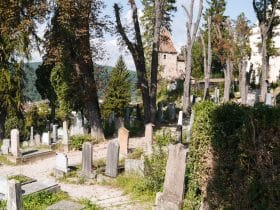
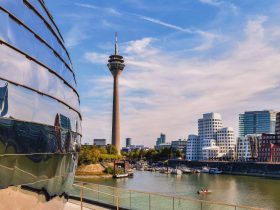
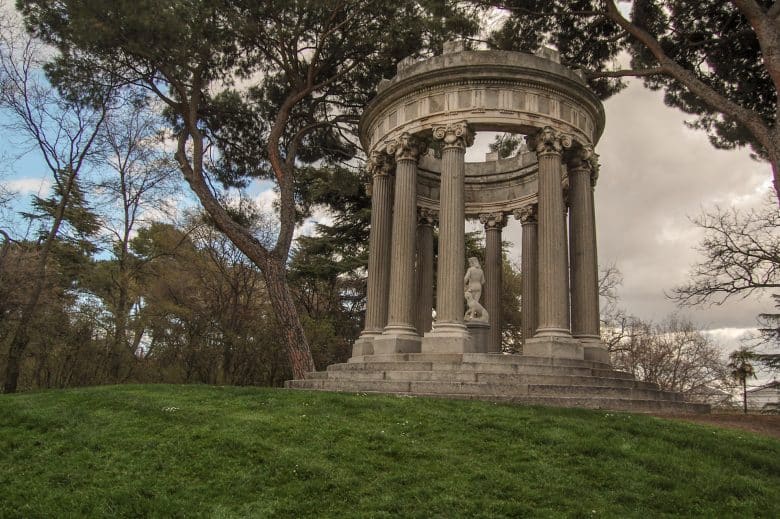
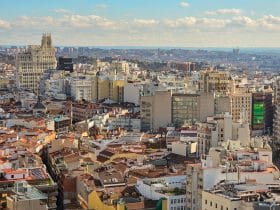

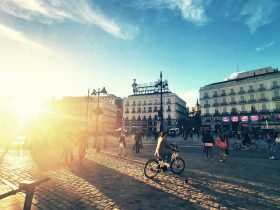
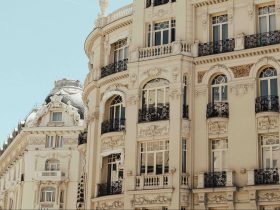
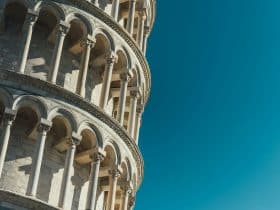
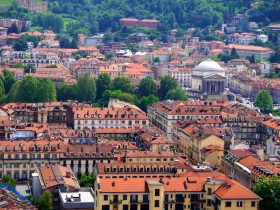
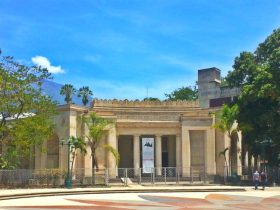
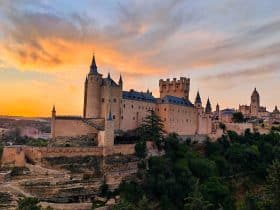
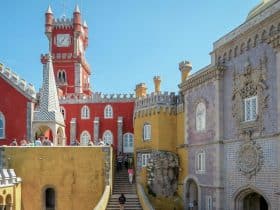
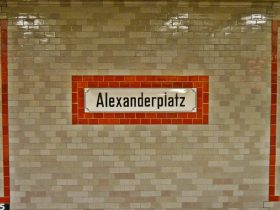









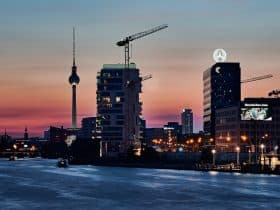
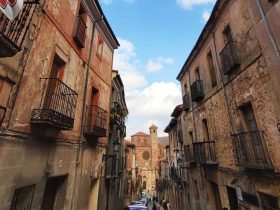
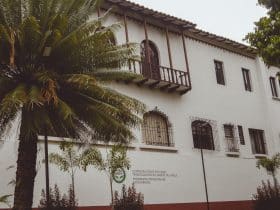
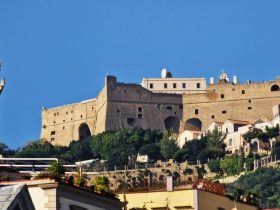

Leave a Reply
View Comments